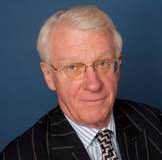Tocqueville Gold 2005 Year-End Review & Outlook
In the last 90 days, the price of gold increased 25%, from around $440 to $550. In contrast, it took three years from its bear market low in 1999 for gold to sustain a 25% rise. The shrinkage of time from three years to 90 days to muster a 25% move signifies that the gold market is evolving. The advance is becoming more dynamic and it is certainly making a lot more noise than those early days, when if I recall correctly, it was more interesting to watch the grass grow.
Bull markets can be divided into four phases: the beginning, the end of the beginning, the beginning of the end, and the end. In terms of the road map for gold, I believe the current phase marks the end of the beginning. The "stealth" phase of the gold bull market ended with the fireworks of the last 90 days. The elapsed time of that first phase was the five years from August of 1999 to August of 2005.
Noisy and dynamic market behavior is necessary to attract new money flows. That is what is taking place. More people are talking about it. Media awareness has increased. What is curious is that few can offer explanations as to what is propelling the advance. Many are still on the side lines, frozen in place for fear that it is "too late". Not to worry, many of these will become buyers as the price advance continues and the reasons become more apparent. Finally, when everyone knows the reasons and it becomes obvious why gold is advancing, it will be mark the final days of the bull market. In my opinion, those days are still well ahead of us, both in terms of time that must elapse and the magnitude of price appreciation.
It is ironic that many who had been invested in gold for years cannot stand this new-found prosperity. They see current strength as a fleeting opportunity to cash in.
When I first started writing about the gold market, I thought the gold price could eventually reach four digits (The Investment Case for Gold-January 2002; archived on www.tocqueville.com). That seemed incredible at the time, because, if right, gold would triple. With gold trading at $560/oz as of this writing, $1,000 doesn't seem so far-fetched.
As the bull market has evolved, so has my thinking. Four digits no longer seems like a stretch to me. Rather, it would seem that gold would be correctly priced at $1,000, just to catch up to other commodities like oil, base metals, natural gas, and platinum. We calculate the market cap of all above ground gold, including central bank reserves, equals about 1.4% of global financial assets. In 1934 and 1982, when investor stress reached extreme readings, that percentage was between 20% to 25% (see graph).

The current very low ratio indicates complacency and suggests that gold could double even if worst case macro economic and geopolitical scenarios fail to materialize. If they were to materialize, the potential for gold would go well into four digit territory. Macro and geopolitical nightmare scenarios are probably motivating some capital flows towards gold. However, we estimate these represent a small fraction of what is driving the price. In terms of investment rationale, it is still possible, and in fact quite commonplace, to make a benign, even Panglossian, case for gold's advance: global asset rebalancing towards "hard assets", of which gold is only a bit player, an incidental subset; continuing prosperity in Asia where there is a cultural affinity for the metal; high cash flow to oil producing countries, many of whom don't particularly like dollar assets; the resounding success of the gold ETF (GLD-NYSE), which enables risk averse investors to buy the financial insurance that gold represents cheaply and efficiently (and in a little over one year has become the 14thlargest holder of gold in the world); and the recent disappearance of the central banking community as sellers.
With respect to global capital markets, it is possible to say that complacency reigns. Eventually, gold will advance for reasons that few are will to talk about: a resumption of the bear market in equities, a slide in the US dollar, and a credit squeeze that could deflate the world economy. In the US, a slowdown in housing is just beginning to materialize. Consumer spending is poised to weaken. How will the Fed respond? One can be certain that their actions will not comfort foreign holders of US dollar denominated reserves.
Our portfolio contains optionality to gold that has yet to surface. With significant exposure to small cap exploration and development companies, we stand squarely in the path of an impending takeover frenzy as large cap producers decide to reprice the economic potential of reserves assuming $500 gold. When they do so, they will abandon their timid ways and become voracious acquisitors of small to mid cap companies. We are seeing early signs of this, and expect this change in behavior to become more evident as the year progresses.






 John Hathaway, CFA, Senior Managing Director, Co-Portfolio Manager
John Hathaway, CFA, Senior Managing Director, Co-Portfolio Manager









